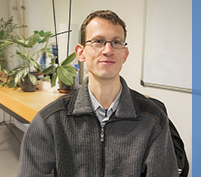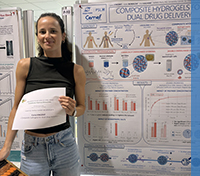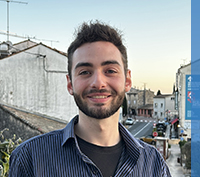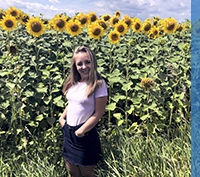PhD defence of Jennifer El Zahabi
Multi-scale Modeling of Interfacial Instabilities and Bubble Dynamics: Application to Filling Flows in the Lost Foam Casting Process
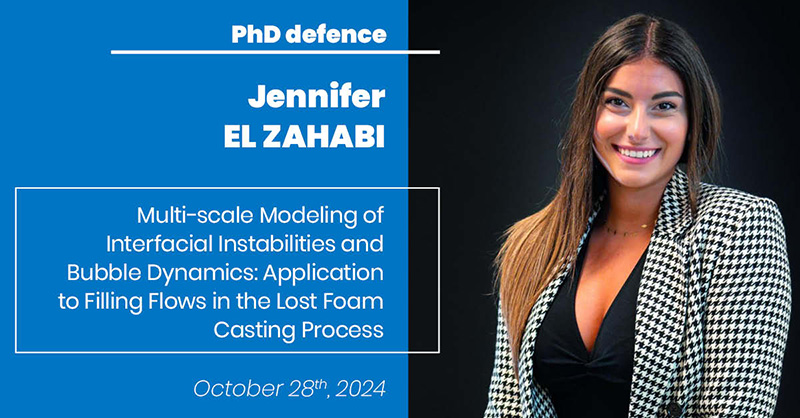
Jennifer El Zahabi conducted her doctoral research in the CFL team under the supervision of Elie Hachem and Rudy Valette. She will defend her PhD in Computational Mathematics, High Performance Computing and Data, on October 28th, 2024 in front of the following jury:
M. Amine AMMAR Arts et Metiers, ENSAM Angers
Mme Stephanie ELGETI Vienna University of Technology
M. Laurent FERRY IMT Mines Alès
M. Frédéric COSTES Transvalor
M. Elie HACHEM Mines Paris – PSL, CEMEF
M. Rudy VALETTE Mines Paris – PSL, CEMEF
M. Romain CASTELLANI Mines Paris – PSL, CEMEF
M. Jean-Pierre MICHALET Stellantis
Abstract:
The Lost Foam Casting process is an evaporative-pattern casting method used for producing automotive parts. It involves a polymeric foam pattern, coated with a gas-permeable refractory material and surrounded by sand, being replaced by hot liquid metal. When the foam contacts the molten metal, it decomposes, forming a decomposition layer between the metal and the pattern. Ideally, this layer consists solely of gaseous byproducts that escape through the refractory material. However, inadequate process conditions can result in the formation of liquid residues from decomposition, which may subsequently generate vapor bubbles within the solidifying metal. If these bubbles do not escape quickly enough, they can become trapped, leading to defects. Due to the multi-scale and multi-physical nature of this process, modeling it accurately can be computationally expensive. This thesis simplifies the process to focus on key phenomena of bubble formation, ascent, and entrapment. We start with experiments to understand the coating’s physical parameters and process kinetics. This knowledge enables us to model the problem theoretically and numerically by coupling the Navier-Stokes equations with an explicit treatment of surface tension and a new level-set method for representing bubble interfaces. This approach allows us to study bubble dynamics, including their behavior near walls and deflation within the coating. To reduce computational costs, we model bubbles as an average population rather than simulating each individually. This approach helps identify high-defect probability areas in complex geometries, potentially serving as a substitute for complex and costly X-ray imaging.
Keywords: CFD, Heat transfer, Phase change, Filling flows, Interfacial instabilities, Bubble dynamics





